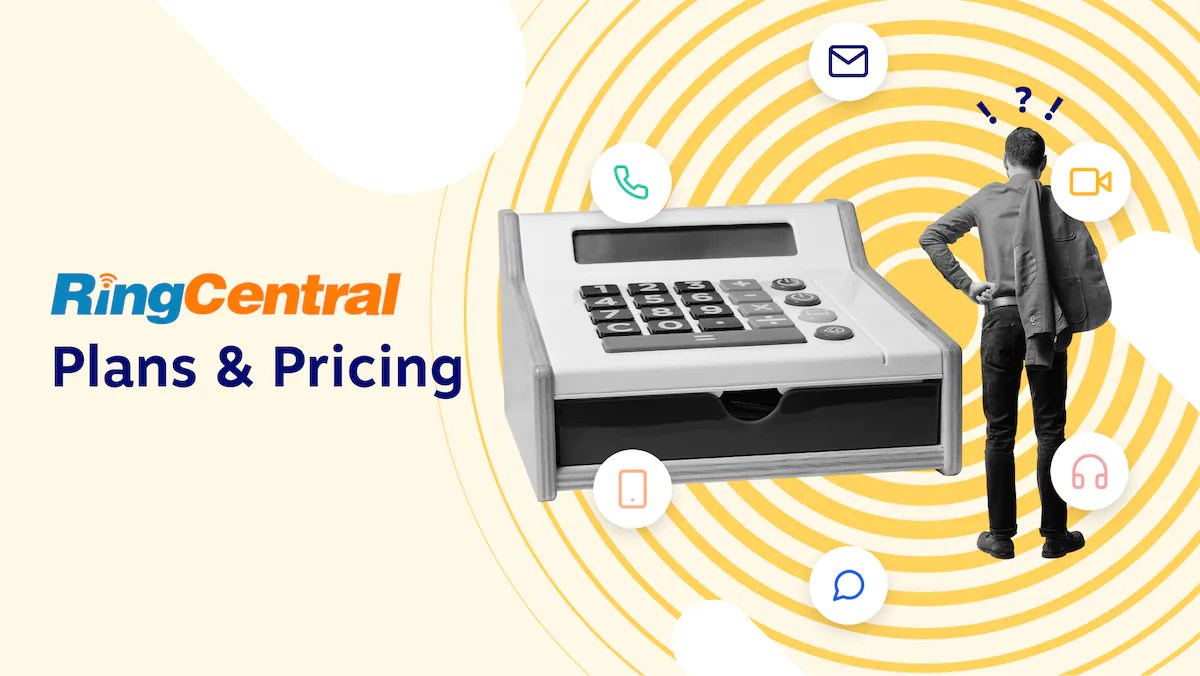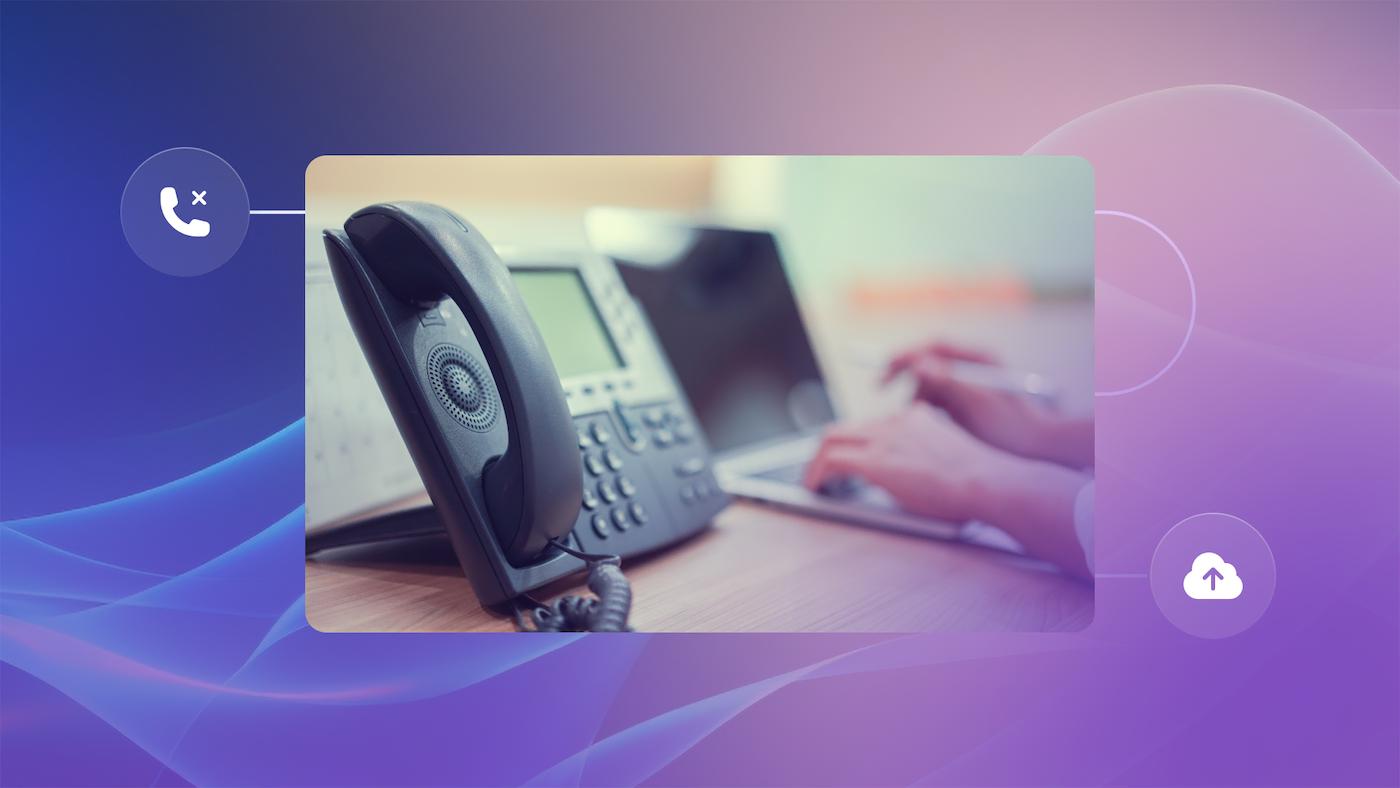Comparing Cisco vs. Avaya contact centers means you’re putting two telecom heavyweights up against each other.
Who comes out on top in this title fight?
Read on to see the pros and cons of each contact center solution to discover which best suits your unique business needs and find out whether there’s a third option worth considering in this battle.
Cisco vs. Avaya Contact Center: The Pros
To make this a fair test, we’re going to break down the pros and cons of both Cisco and Avaya.
In the past, both Cisco and Avaya have provided on-premises and hosted contact centers.
Today’s modern offerings take the shape of virtual call centers and omnichannel contact centers. This means you get channels like voice, SMS, email, web chat, and social media as standard.
You also get a wide range of calling features, like call queueing, auto attendants, and interactive voice response systems.

These are table stakes.
But there are some neat new features you might not be aware of — and they just might make your decision for you.
Pros of Cisco
Administration and customization
By handling incoming calls, providing comprehensive reports and dashboards, and integrating with other collaboration solutions, Cisco helps transform contact center efficiency holistically rather than app-by-app.
This is thanks, in part, to its integration into the Webex portfolio (Cisco bought Webex back in 2007 and drip-fed functionality into its unified communications (UC) and video conferencing products over time).
Upon deciding to incorporate all communications into a single stack, an interface refresh and focus on usability began. This overhaul signified a major brand and usability refresh compared to traditional Cisco Systems UC solutions. This change coincides with Gartner’s inclusion of Cisco as a Niche Player in its Magic Quadrant for contact center as a service.
The number of integrations seems to be growing every day at Cisco, making it a flexible solution with a large partner base. This stems from a move away from on-premises Communications Manager setups, favoring web-based SaaS.
There are also several Cisco products that you can integrate with Webex. If you’re a Cisco customer for networking, security, or voice, everything can now live under one roof, with a global admin center for all moves, adds, and changes.

Advanced features
Features include intelligent routing and customizable contact flows, as well as queue management, wrap-up codes for tracking reasons for call ends, and options for callbacks to reduce wait times and provide a better overall customer experience.
Stand-out features of the Webex Contact Center include:
- Queue callback
- Intelligent virtual agents (IVAs)
- Drag-and-drop call flow builder
- Remote agent support (PSTN/mobile)
- Advanced skills-based routing
Cisco’s Webex Contact Center is built for scalability and flexibility, with cloud technology allowing easy deployment and omnichannel support. It includes 360-degree customer journey analytics and predictive analytics for call routing, as well as integration with CRM systems for a comprehensive customer view.

Webex offers staff scheduling, as well as efficient and customizable call reports and call flows. This combination helps both agents and customers become more productive.
AI capabilities
Building on an already impressive feature set, AI opens the door to even more functionality designed to make agents more productive and less stressed.
As an example, take the agent-break feature, Thrive Reset, which is focused on user experience. By detecting burnout or stress, Webex will now prompt agents to take breaks so they don’t continue putting themselves under pressure.

By prioritizing agents’ well-being, Webex has a rather nice differentiator when comparing Cisco to Avaya.
That said, when mentioning this feature over dinner the other day, a friend and industry analyst with EnableUC, Kevin Kieller, pondered the repercussions of such a feature. What happens when certain agents keep needing more breaks? Are they the first out the door if downsizing needs to happen?
In the same conversation, Dom Black, Research Director at Cavell, said this would be a good thing for contact center management. Having access to this unique data presents an opportunity for training and better resource planning.
Pros of Avaya Contact Center
Digital and blended interaction capabilities
Avaya’s platform supports digital interactions and blends agents effectively, facilitating seamless transitions between different communication mediums.
This encourages the cross-skilling of agents, leading to a more efficient use of your workforce. When agents can tend to both inbound inquiries and outbound calls, there is less dead time when they aren’t contributing to your business. Everything becomes one workflow instead of disjointed departments.

Customer prioritization and skills-based routing
Intelligent algorithms ensure customers get routed to the most appropriate agents, enhancing personalized service delivery and managing queues efficiently.
This reduces the customer’s hassle of getting through to the wrong person, repeating their inquiry, and then getting transferred again.
Once a customer interaction is complete, Avaya’s powerful suite of analytics translates data and customer outcomes into trend analysis and graphical displays of your business’s performance.

Related: Avaya Contact Center Pricing: Is It Worth It?
Comprehensive contact management
Avaya has come a long way since being thought of as a phone system with some call queue treatment. Back in the on-premises days, Avaya was in danger of losing out in the cloud-contact center market.
Now we see key contact center features like:
- Call monitoring
- Real-time reporting
- Historical reporting and analytics
- Skills-based routing
- Predictive and auto dialer
- Omnichannel support, including social media, SMS, email, and chat
With a renewed focus on contact management, Avaya has stepped into the 21st century, enabling the service of your customers on their channel of choice.

Cisco vs. Avaya Contact Center: The Cons
It’s only right to also point out the weakness of contact centers. Let’s take a look at what real users report as the cons of both Cisco and Avaya.
Cons of Cisco
SMS limitations
While Cisco’s acquisition of IMImobile in 2021 added SMS messaging to its omnichannel roster, business texting remains one-to-one and text-based only. As of early 2024, there is no support for MMS or group chat.
The alternative is to use an app in the Webex store, but this creates a disjointed reporting experience as information gets siloed.
Reporting limitations
There’s no denying Webex has a ton of reports available. But some users find challenges in obtaining detailed reports for specific call scenarios and integrating with recording and other communication solutions.
When using multiple platforms for different calling components, some admins report that it’s challenging to find what they need to piece together a full customer journey.
Complex licensing and upgrades
Licensing can be complex, and provisioning specific features may take time. That’s the feedback from those outside the Cisco community.
Rob Harris, an independent technical consultant, scores Cisco 10/10 but still points out, “Licensing is complex, and to get certain things provisioned takes a little bit longer than it probably could.”
If you’re an insider with connections and a dedicated resource, this problem disappears. But new customers getting set up for the first time cite the initial implementation of new features to be problematic.
Even the biggest fans of Webex report that there should be more testing before releasing new features into the wild:
“Upgrades can be problematic, Cisco should do more testing before releasing updates and new versions of software.”
~Verified TrustRadius user
Cons of Avaya Contact Center
Reporting and launch latency
Some users experience delays in reporting and system launching, affecting operational efficiency. When considering Avaya alternatives, cloud-native platforms like Five9 and Nextiva tend to get the nod.
App and dashboard limitations
The mobile app can be slow, and TrustRadius reviewers have noted a desire for dashboards that are more customizable to better suit individual needs.
In a market that must be highly responsive to demand and fulfill customer satisfaction, taking customer considerations and deploying new features and iterations is a must if Avaya wishes to remain competitive.
Integration and usability challenges
While Avaya integrates well with CRM systems, there can be challenges in streamlining these integrations and ensuring ease of use. Often, you need the help of an Avaya support rep when setting up third-party integrations. This potentially lengthens implementation and drives up unexpected costs.
This problem appears to extend to overall implementation and onboarding. Ethan, a writer for SYSGeeker, concludes the following:
“Due to its extensive features and functionalities, Avaya Call Center Elite may require some time and resources for proper implementation and training. Some businesses may find the learning curve a bit steep initially.”
Comparing Cisco and Avaya Contact Center vs. Nextiva
When comparing Cisco vs. Avaya, there’s a third name you need to know about.
Here’s where Nextiva excels when standing next to these old heads.
| Functionality | Nextiva | Cisco | Avaya |
|---|---|---|---|
| Ease of use | ✅✅✅✅✅ | ✅✅✅✅☑️ | ✅✅✅☑️☑️ |
| Cost-effectiveness | ✅✅✅✅✅ | ✅✅✅☑️☑️ | ✅✅✅☑️☑️ |
| Robust features | ✅✅✅✅☑️ | ✅✅✅✅✅ | ✅✅✅☑️☑️ |
| Quality of support | ✅✅✅✅✅ | ✅✅✅✅☑️ | ✅✅✅☑️☑️ |
Ease of use
Nextiva is known for its user-friendly interface, making it accessible even to those who aren’t technologically savvy.
If you have a team of agents who need to get up and running fast, Nextiva makes it possible to turn up to work and learn on the go. The learning curve is minimal, taking UI inspiration from familiar apps agents already have at hand.

This simplicity extends to the setup process and ongoing management of the system. As a cloud-only solution and SaaS model, you can provision licenses at the click of a button and make changes on the fly in Nextiva’s admin portal.
Cost-effectiveness
Nextiva offers competitive pricing, often coming in as a more affordable option compared to other solutions, without sacrificing features or performance.
With the Essential package starting at just $129 per user monthly, you can turn on inbound and outbound capabilities, access advanced analytics and reporting, and use its API, if desired.

Robust features and flexibility
From auto attendant menus, call routing, and supervisor monitoring to advanced reporting and call recording options, Nextiva provides a wide array of functionalities.
As a cloud-native platform, Nextiva customers benefit from new features as soon as they come to market.
There’s no legacy-on-premises hangover, and the culture is very much that of innovation and customer empowerment. You don’t need to be a premium-rate customer, and there’s no waiting list.
If there’s new functionality, like call center automation, you too can start benefiting from 30% cost elimination while automating up to 90% of your routine customer interactions.

High-quality support
Nextiva boasts a 99.999% uptime and is backed by a 24/7 support team and world-class monitoring. The company recognizes the importance of having both self-service customer support and someone on the end of the phone for you.
Nextiva’s technical support is frequently praised for its helpfulness and effectiveness in resolving issues and assisting with system setup and optimization.
“We made a phone call to Nextiva and they were able to switch us over immediately, so we had no downtime. The temporary numbers Nextiva gave us rolled in, and it was seamless.”
~Jeff Bratschie, Franchise Director of Operations, Stanley Steemer
Related: The 5 Best Alternatives to Cisco Call Center
Nextiva: There’s Something for Every Business
Nextiva offers the advanced features, flexibility, and support needed to scale your contact center affordably.
That’s why this newcomer always sneaks into the conversation when comparing Cisco vs Avaya contact centers.
While there are use cases for both Cisco and Avaya, unless you’re an existing customer, there’s little drawing you to each vendor when compared to an agile contact center provider like Nextiva.
If your priority list includes:
- Ease of use
- Cost-effectiveness
- Robust features
- Quality of support
Then you need Nextiva.
Don’t just take our word for it, either. We won Best in Show at Channel Partners Expo 2024!

To find out why customers choose Nextiva, check out our customer stories library. It really is a library. There’s that many.
Related: Cisco Contact Center: Is UCCX Right for Your Business?
Elevate your CX standards.
Nextiva’s contact center solution delivers the ultimate customer experience and boosts agent productivity.

















 VoIP
VoIP 







